It took decades to build Mexico’s middle class. The coronavirus could demolish it
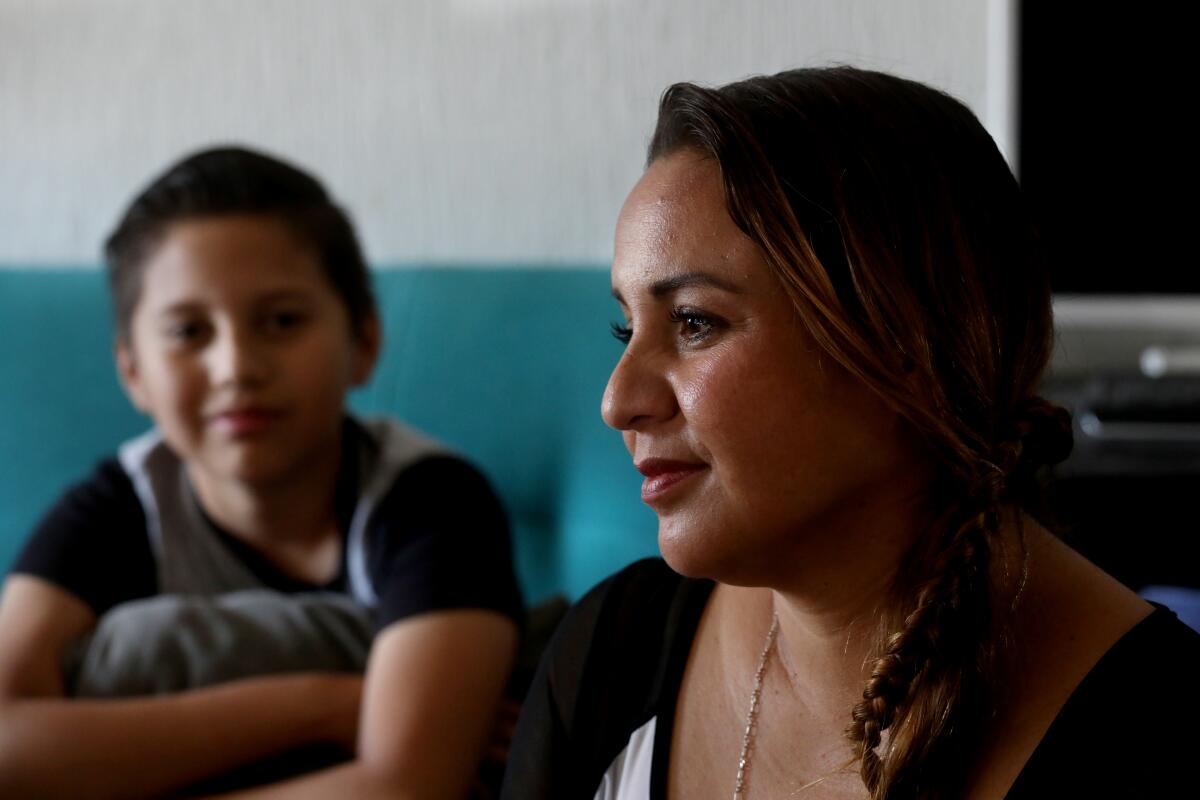
QUER´ETARO, Mexico — Monica Cardenas Leal was living the Mexican dream.
As her once-sleepy hometown of Querétaro transformed into an international hub of the aerospace industry, Cardenas grew with it. The daughter of a carpenter who worked multiple jobs to put food on the table, she graduated from a state aeronautics university and went to work for a Spanish firm assembling parts for Cessna jets and Sikorsky helicopters.
For the record:
1:00 p.m. Sept. 7, 2020This article incorrectly states that President Obama visited Querétaro, Mexico, in 2013. He met with business leaders from there but did not visit there.
Her $500-a-month salary lifted her family into Mexico’s middle class.
She and her truck-driver husband took beach vacations and bought a house in the suburbs. Their children, outfitted in name-brand sneakers and braces, aspired to careers in architecture and psychology.
The coronavirus threatens to undo all of that.
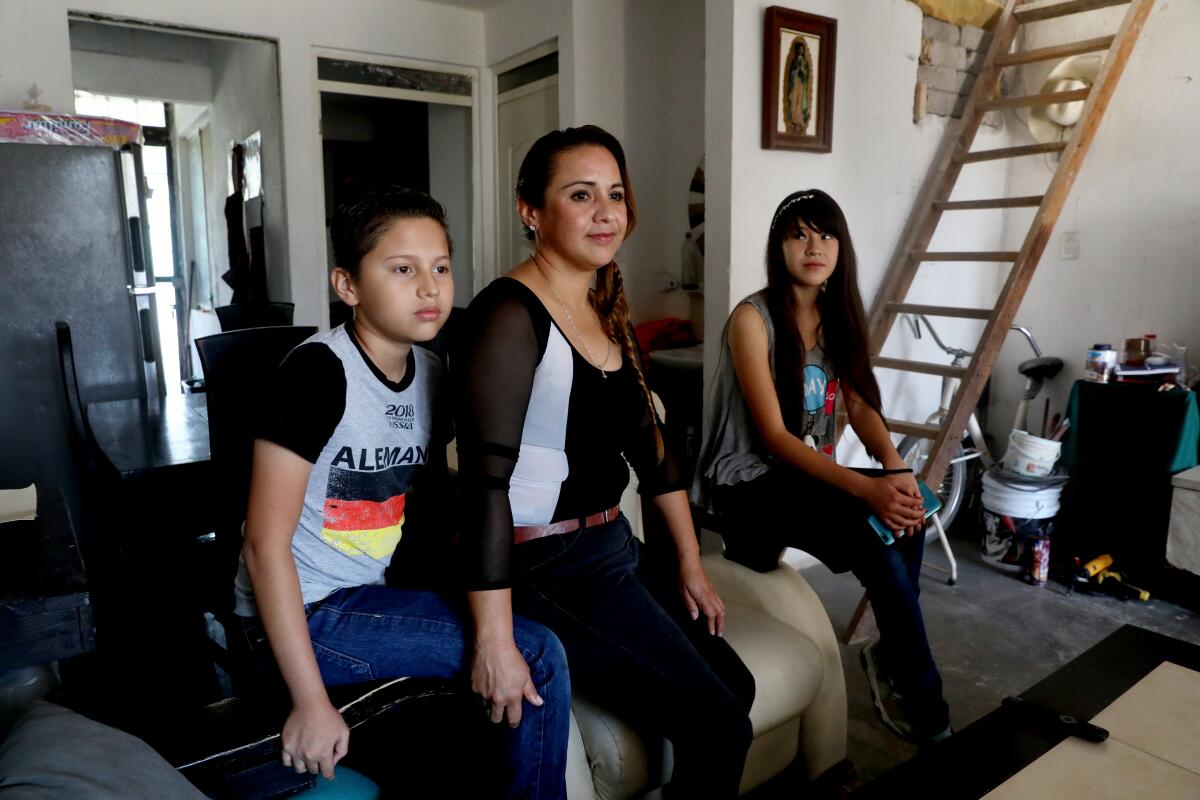
The pandemic has driven Mexico into its deepest economic downturn since the Great Depression, with 12 million jobs already lost, 150,000 small businesses closed and the economy expected to contract by as much as 12.8% this year.
Officials say the crisis — spurred by declining demand for manufactured goods, the collapse of tourism and plunging oil prices — is eroding decades of slow but steady progress in building up the middle class.
Economists warn that long after the coronavirus is defeated or fades away, the economic damage will remain.
“I think this is going to be horrendous in terms of increasing inequality,” said Juan Carlos Moreno-Brid, an economist at the National Autonomous University of Mexico. Even in the unlikely event that Mexico recovers quickly, he said, it could take until 2028 to restore the average income of a decade earlier.
Cardenas, 36, was laid off in June as a global decline in air travel slashed demand for new planes. Two of her five siblings have also lost work.
She now spends her days desperately door-knocking in the industrial parks that blanket formerly cactus-covered hills. Even companies that pay a third of what she once earned won’t call her back.
“It’s overwhelming,” she said. “There are so many people like me looking.”
: :
When President Obama visited Mexico in 2013, his counterpart made sure he visited Quéretaro.
Then-President Enrique Peña Nieto wanted to show off a new vision of his country — one where factories producing ever more sophisticated products afforded workers new cars, flat-screen televisions and comfortable lives in gated communities.
Linked by highways to Mexico City three hours to the south and Laredo, Texas, 10 hours to the north, Querétaro was perfectly positioned to benefit from the tariff-busting North American Free Trade Agreement.
While the 1994 deal decimated small Mexican farmers by forcing them to compete against U.S. agribusiness, it helped Querétaro lure multinational companies including Siemens, General Electric and Bombardier.
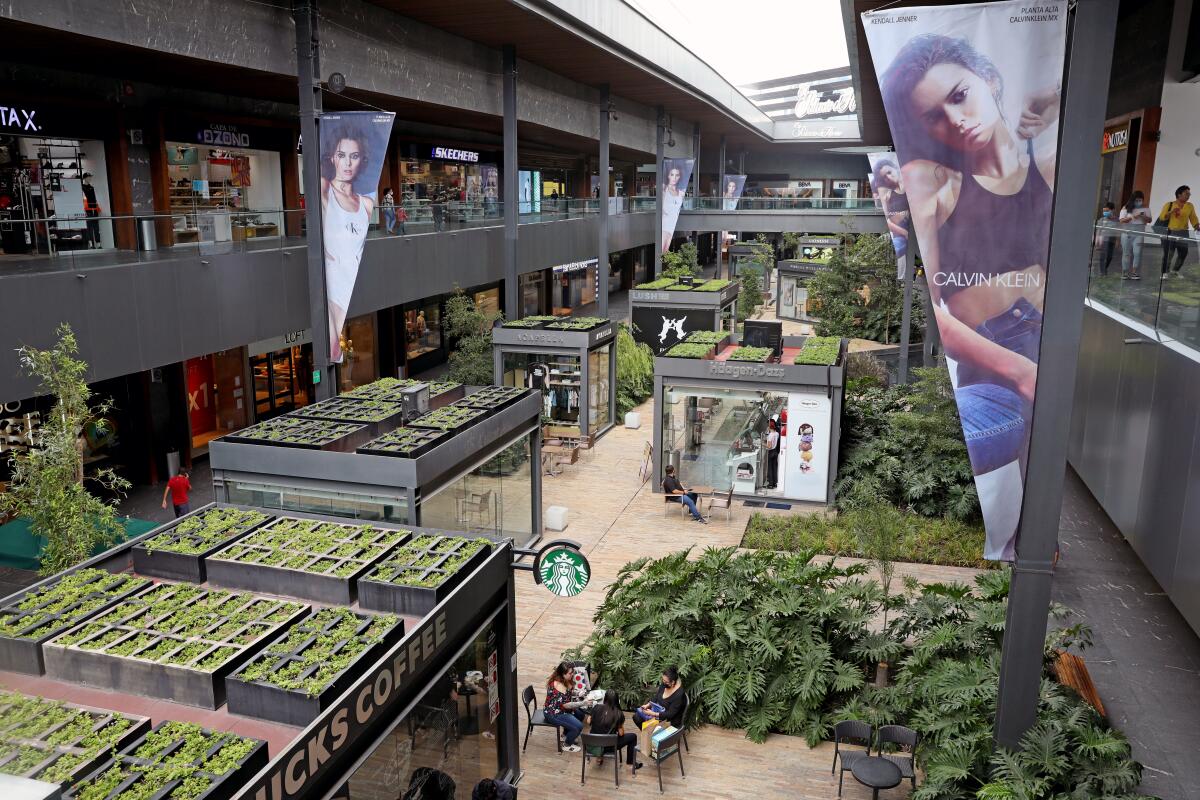
Soon workers there were earning an average of $620 a month — more than twice the national average — and the city was awash with cranes erecting high-rise office buildings, sprawling housing tracts and restaurants serving sushi, craft beer and Argentinian beef.
With the country’s largest shopping mall and annual growth rates among the highest in the hemisphere, Querétaro earned a nickname: “the China of Mexico.”
Fernando Trejo Reyes came looking for work from a rural community in Michoacan state two decades ago.
He arrived on a Monday. By Friday, he had found a job.
He spent the subsequent years climbing the ranks of the middle class, eventually earning $1,600 a month as an industrial engineer at Aernnova, which manufactures parts for planes.
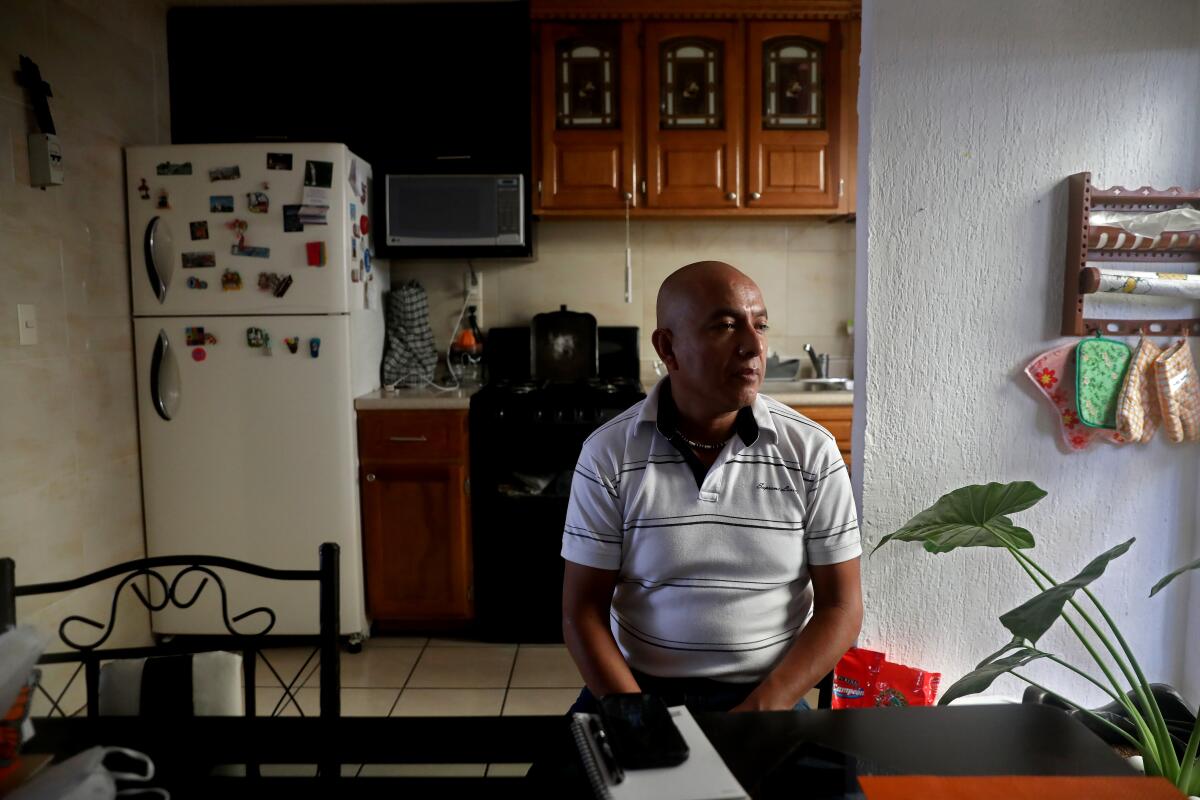
He and his wife enrolled their daughters in private school and bought a house, whose refrigerator they decorated with magnets from European countries that Trejo visited for work.
In late January, not long after Trejo and his wife separated, Aernnova lost a key contract and he was laid off. Every day for the last eight months he has contacted multiple employment firms — with no luck.
“It’s scary,” he said on a recent morning after making another round of calls. “I never knew what unemployment was.”
The pandemic’s destruction is evident everywhere Trejo looks.
Home sales in the state have fallen by 40% this year, and about half of the 80 new housing developments that were under construction have been put on hold.
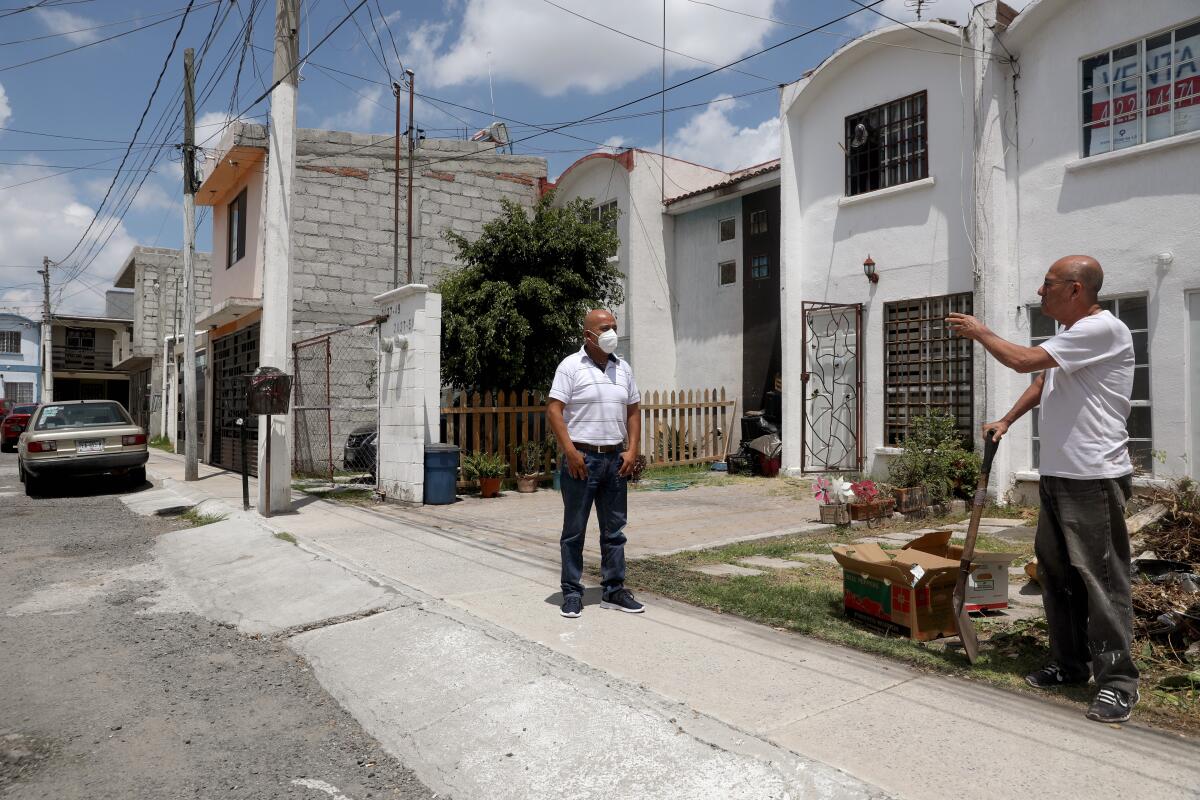
Aerospace firms are expected to export about a third less than last year, according to the Mexican Federation of Aerospace Industries. The auto industry has seen a similar drop.
The production slump is rippling down the supply chain.
Ian Morales, the chief executive of a company called SIB Engineering, which creates technology for auto manufacturers, was forced to lay off half of his 50 employees after demand dropped precipitously and some of his customers stopped paying their bills.
“A lot of people were in tears,” he recalled. “But if we saved them, we’d lose the business.”
He and other small business owners complain that there hasn’t been enough assistance from the federal government, which does not provide unemployment insurance and has opted against the bailouts, stimulus checks and other first-aid that many countries have delivered to struggling businesses and workers.
“There is nowhere to turn,” said Morales.
: :
While the middle class has been growing, it is still a minority constituency compared to Mexico’s largest socioeconomic group: the poor.
The average salary in Mexico is $290 a month. But because so many people work outside the formal sector, the government defines class not by income but by spending habits and other quality-of-life indicators.
The most recent government survey, conducted in 2010, found that 39% of the country’s population was middle class, meaning they were likely to own a computer, spend about $200 a month dining out and have at least a high school education.
That was up from 35% a decade earlier.
The institute found that 59% were “lower class,” compared with the 2% who were “upper class.”
The World Bank found that over that same decade, 17% of Mexicans joined the middle class, which it defines as earning between $10 and $50 a day.
The middle class has not found a strong ally in Mexican President Andrés Manuel López Obrador, in part because the poor are his political base.
The president has rejected the standard government playbook for dealing with economic crisis and has embraced austerity in the face of the pandemic — slashing the salaries of officials, canceling year-end bonuses and eliminating entire government departments.
In his second annual address to the nation last week, he criticized “elitist” economic rescue packages that grant tax breaks and debt relief to businesses, saying preexisting federal programs that give cash directly to the poor will protect Mexico from the bottom up.
“We’re not giving priority to large companies and banks,” he said. “The people are being rescued first.”
López Obrador hails from Mexico’s largely poor south, a region that has not benefited from free trade in the same ways as states in the center and the north, and has long been skeptical of deals that appear to benefit big business.
In 2018 he canceled a $13-billion airport project backed by some of the country’s wealthiest business leaders, and this year he ordered the closure of a $1.4-billion brewery in the border city of Mexicali that he said had benefited from corruption.
Those decisions have spooked investors, resulting in a 16% dip in direct foreign investment last year that put the country on shaky economic ground even before the pandemic.
“Many transnational organizations are less concerned about the pandemic than the politics of López Obrador,” said Arturo Hernandez, a factory owner and vice president of the Industrialists Club of Querétaro, a business group.
The president’s opponents say he is the wrong man to lead Mexico out of the economic crisis.
“The federal government has offered few incentives to reactivate the economy,” said Agustin Dorantes, president of the Querétaro chapter of the right-of-center National Action Party, which has long dominated the state’s politics. “His government is incapable of governing responsibly and makes decisions guided by whims instead of strategy and intelligence.”
López Obrador insists that the worst of the crisis is over, touting the creation of close to 100,000 formal jobs in August — although that is less than 10% of the total lost since the start of the pandemic.
He has highlighted other potential bright spots.
The integration of the Mexican and U.S. economies is likely to only deepen in coming years, especially after the signing earlier this year of a new free trade agreement that replaced NAFTA.
Mexico is also poised to profit from growing concerns about the U.S.-China relationship, and would likely be the main beneficiary from companies shifting investments out of China.
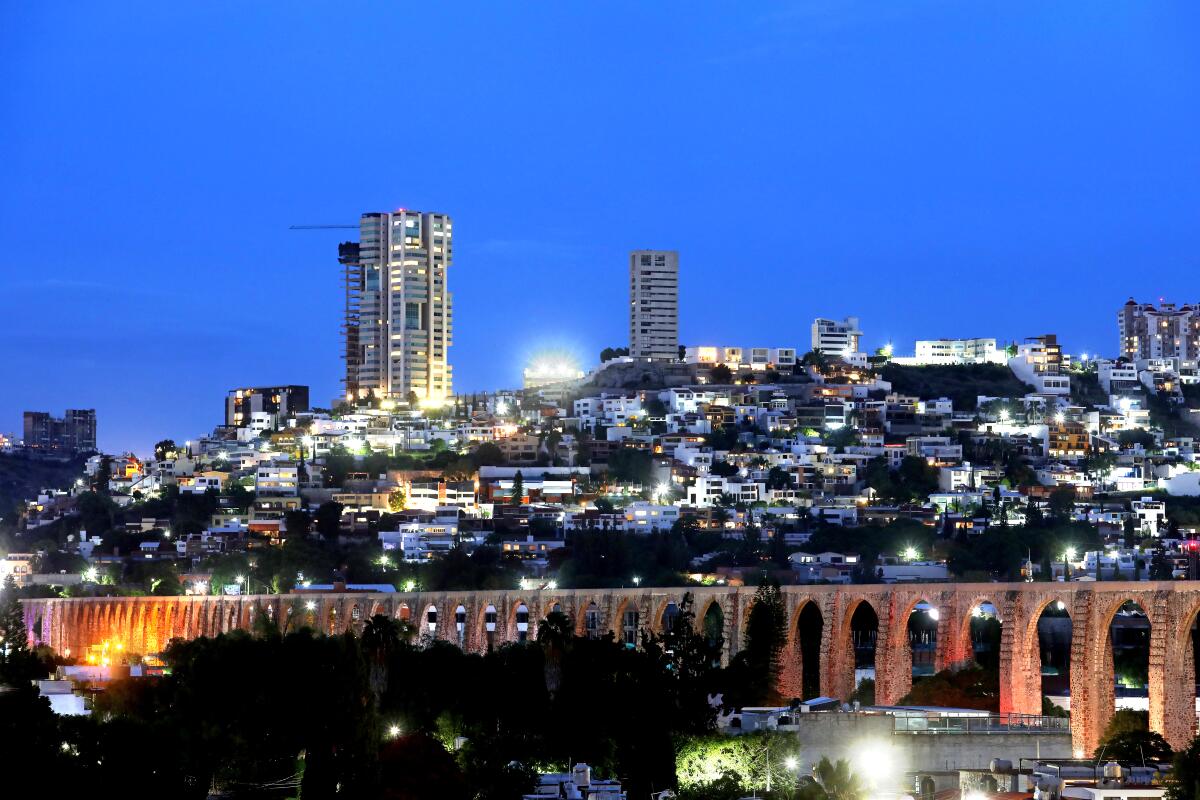
“If we do things right, the volumes of international investment could really grow,” said Luis de la Calle, an economist who helped negotiate NAFTA as the former undersecretary for international trade negotiations in Mexico’s Ministry of the Economy.
He said that places like Querétaro are likely to recover more quickly than other regions, particularly parts of the country that depend almost exclusively on tourism.
But even in Querétaro, survival may depend on adaptation.
In March, Jose Jimenez, the chief executive of Innovet, a company that makes plastic packaging, said of the coronavirus: “It’s going to hit us and it’s going to be bad.”
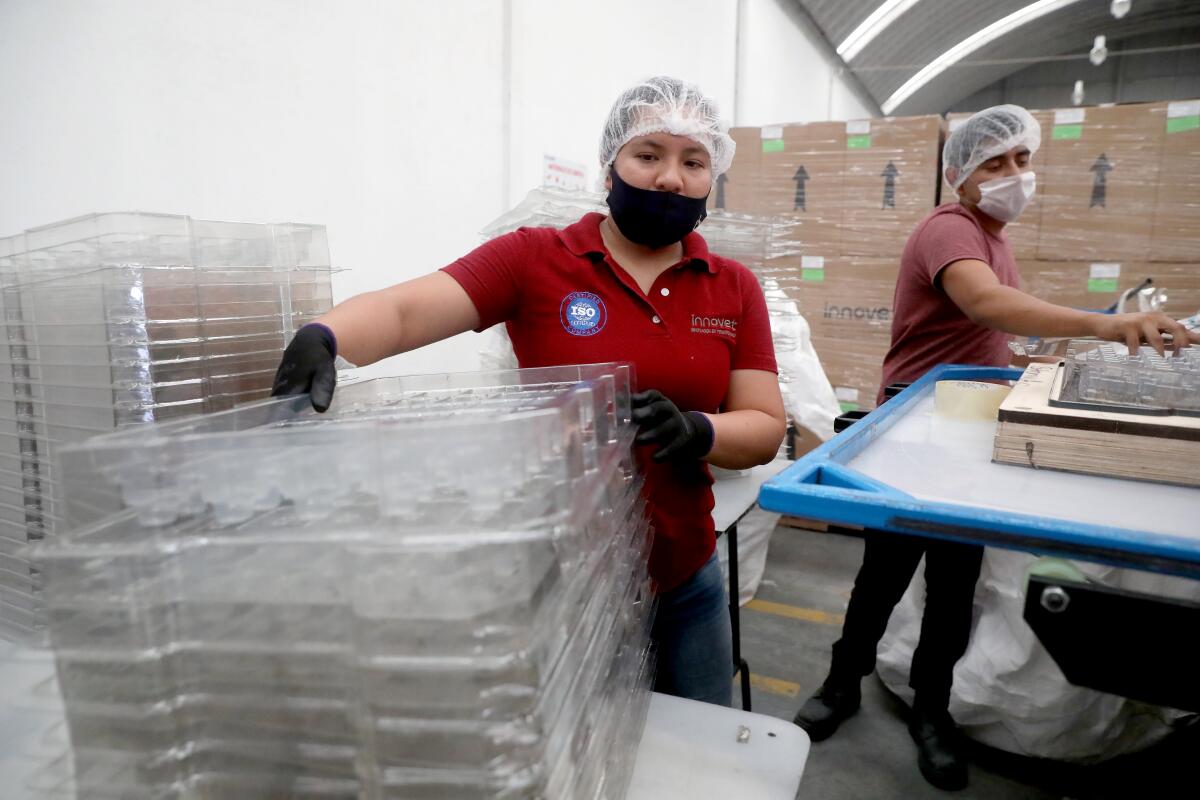
To reduce dependence on its clients in the auto industry, the company began making plastic visors and other protective gear.
Growth expectations for the year have dropped from 38% to 20%, but Jimenez is thankful the company managed to avoid layoffs.
“We think the worst has passed,” he said.
But for others, it is increasingly hard to remain optimistic.
Lily Trueba, who has 20 years of experience in the banking sector in Querétaro, was laid off three months ago.
A single mother, she was forced to put her 15-year-old daughter, who used to attend a private school, into a public one — part of a trend that could shut down 40% of private schools this year, according to an association that represents them.
Trueba, 44, has a friend who runs a private school and had to lay off most of his staff. Another friend, who owns a small chain of laundromats, had to close one of his locations.
Other acquaintances are selling personal items to survive. She expects many to leave the city that once seemed brimming with opportunity.
“The economy always flowed favorably,” she said. “Now everyone is battling.”
More to Read
Sign up for Essential California
The most important California stories and recommendations in your inbox every morning.
You may occasionally receive promotional content from the Los Angeles Times.










